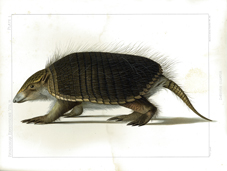The latest Special Collections Exhibition has just opened, so why not call in and enjoy some splendid books as one of the many joys of Christmas? By Land and By Sea. Scientific Expedition Reports in Special Collections from 1826 to the 1960s will run through to 4 March 2016.
Rich with photographs, colourful plates, scientific descriptions, anthropological and geographical observations and general insights into expeditionary life, the Scientific Expedition Reports are a veritable mine of information. From the Arctic to the Antarctic, from Uganda to Patagonia, the earliest of the reports dates from D’Urville’s expedition in the Astrolabe 1826-29, published in 1832, and the latest are from the University of Canterbury Snares Islands expeditions beginning in the 1960s.
Men and women from New Zealand, Australia, Norway, France, Sweden, America, the United Kingdom, Canada, Denmark, China, Egypt and many more countries besides, have travelled the world by land and by sea in the name of science and exploration and have documented the results in these scientific reports. Many of the scientific observations made and specimens taken are still being researched today and despite the treacherous conditions and ever present risks, most members of these expeditionary parties returned alive. The Scientific Expedition Reports housed in Special Collections, University of Otago, are a testament to and a record of humankind’s insatiable desire for knowledge.
Notable items on display include Dumont D’Urville’s Voyage de la corvette l’Astrolabe… les anneìes 1826-1827-1828-1829 (1830); Sir James Clark Ross’s The Zoology of the Voyage of H.M.S. Erebus & Terror (1844-1875); theNovara publications (1868); the Princeton University Expeditions to Patagonia, 1896-1899; the British Antarctic (‘Terra Nova’) Expedition, 1910; and the BANZARE, 1929-1931, under the command of Sir Douglas Mawson. Of particular note is the famed Prof. Benson ‘Geological Map of the Dunedin area’, hand-drawn by Benson form 1920 to 1946. It is large. It is amazing.


